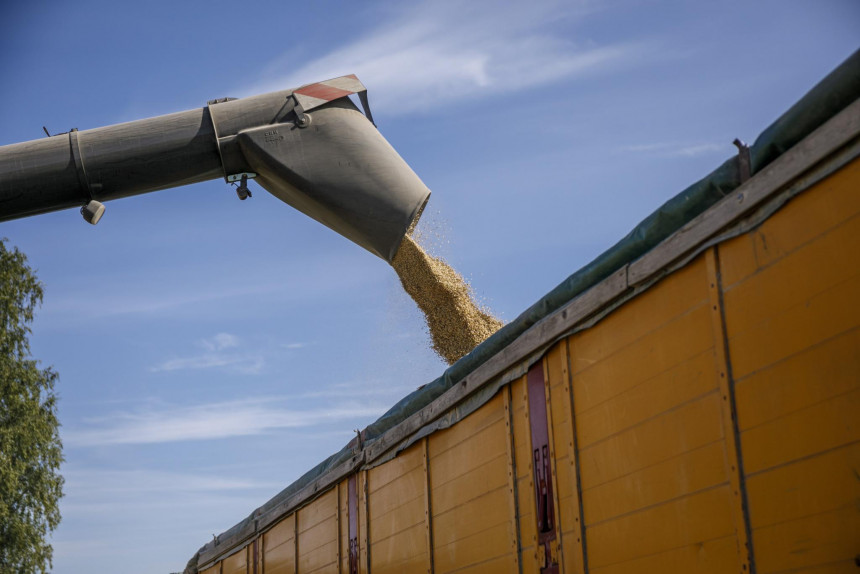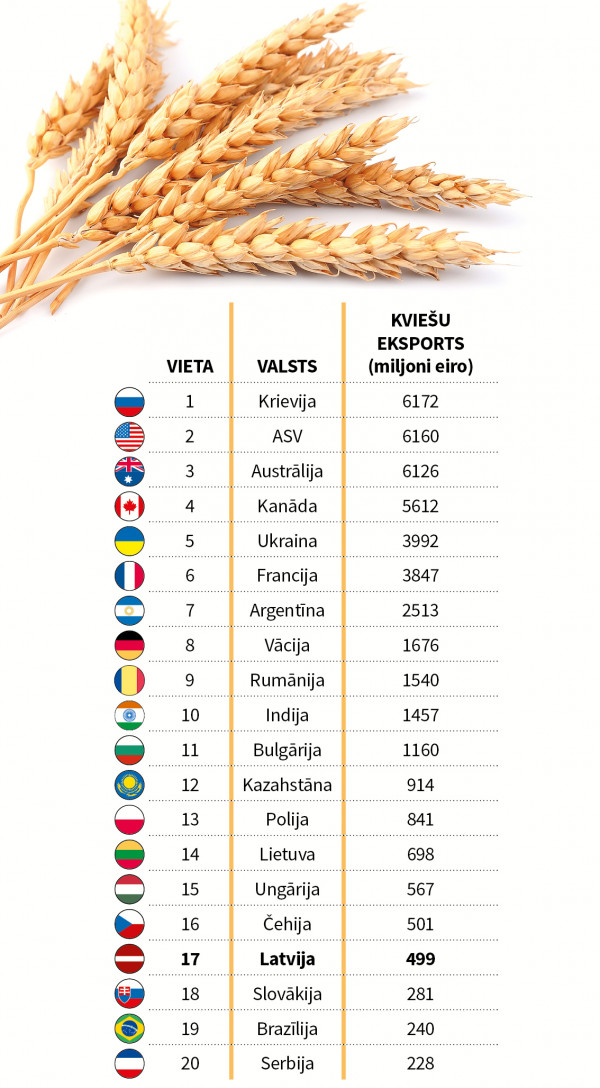Latvian companies' earnings from wheat exports are almost double the earnings from rail services exports

According to data compiled by the International Trade Centre (ITC), in 2021 Latvian companies' income from wheat exports (more precisely - wheat and wheat-rye blend) amounted to €499 million, which is significantly higher than the export income generated annually by, for example, Latvian railways.
According to ITC data, Latvian companies earned €295 million from exports of railway services. For comparison, in 2018, Latvian companies' income from the export of rail services was higher than their income from wheat exports. Ten or fifteen years ago, Latvia's transit sector was considered to be, and partly was, one of the most important in economic development. As Russia gradually shifted its export cargo from the Baltic ports to the ports on the Gulf of Finland (Primorsk, Vysotsk, but especially Ust-Luga), the sector's weight in the economy declined. However, other sectors, construction services, agricultural and food exports, etc. continued to grow at a high rate. The decline in export earnings in the transit sector was offset by growth in exports of other goods and services.

While 2021 was not the best year for Latvian wheat exports (the record was set in 2020 when wheat export earnings were €569 million), in recent years Latvian wheat exports have accounted for more than one percent of the world's total wheat exports.
In terms of total wheat exported (2.14 million tons), Latvia ranked 15th in the world and 10th in Europe. In 2021, the world leaders in wheat exports were Russia (27.37 million tons), Australia (26.18 million tons) and the USA (24.01 million tons). Meanwhile, Latvia was ahead of Slovakia, Serbia and other countries in terms of total wheat exports in 2021. In 2021, Nigeria received almost half of Latvia's wheat exports. South Africa, Spain, Saudi Arabia, the Netherlands, Germany, Lithuania, Mauritania, Algeria, the United Arab Emirates and Kenya were also significant buyers of Latvian wheat.
Latvia's position in the world in terms of export earnings is slightly lower (17th in the world and 11th in Europe) because Latvia's climate and soils (with the exception of Zemgale) are not as favorable for grain production as in many countries with warmer climates, so much of Latvia's wheat can be exported only for animal feed production.
According to Euronext prices, for most of last year, wheat prices were between €200 and €250 per ton and only started to rise sharply towards the end of the year, reaching €300 in December. This spring, however, wheat prices exceeded €400 per ton for a time. If this trend continues, this year's wheat harvest, if at least equal to last year's, could give wheat growers a third more income this year than last year.
Since the price of cereals, together with the price of energy, has a significant impact on the price of bread and other cereal products, the price of all cereal products - bread, pasta, etc. - should increase by at least the same amount if current market price trends continue.
